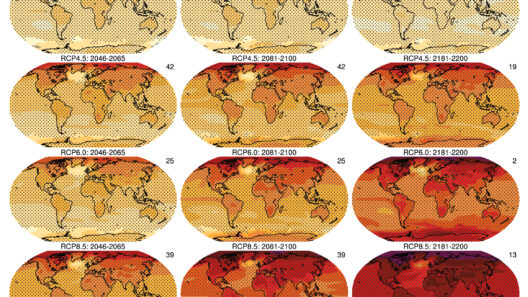When we ponder the pressing dilemma of climate change, have we ever stopped to consider the silent guardians of our planet—the trees? In a world teeming with technology, methods, and theories to mitigate climate change, one might whimsically ask: can a humble tree genuinely act as a powerful ally in our battle against global warming? The answer, resoundingly, is yes. Yet, this relationship also presents a compelling challenge. Can we rally enough collective will to protect and amplify the role of trees, which are not simply entities in nature but pivotal players in the complex game of climate dynamics?
Trees are exceptional in their ability to sequester carbon dioxide, a principal greenhouse gas that significantly contributes to the warming of our atmosphere. Through the process of photosynthesis, trees absorb carbon dioxide (CO2) from the air and, with the aid of sunlight, convert it into glucose, which serves as their food. The oxygen produced during this process is a delightful byproduct, replenishing the Earth’s atmosphere. An adult tree will absorb roughly 22 kilograms (about 48 pounds) of CO2 each year, while a mature forest can store over 1,100 tons of carbon per hectare. Such statistics highlight the monumental scale at which trees operate in their silvicolous landscape.
Furthermore, trees play an indispensable role in tempering local climates. Through a process called transpiration, they release water vapor into the atmosphere, which, in turn, can contribute to cloud formation and ultimately influence precipitation patterns. Areas adorned with abundant trees experience moderated temperatures—vastly cooler in the summer and much warmer in the winter—due to both shading and the cooling effects of respiration. This interplay between trees and climate regulation underscores how urban deforestation could serve to exacerbate the urban heat island effect, leading to drastically altered weather patterns and increased energy demands.
However, the challenge of sustaining tree ecosystems is critical. Urbanization and agricultural expansion relentlessly encroach upon forests, leading to significant deforestation. The threats to our tree populations do not merely end at the chainsaw; they also encompass invasive species, disease, and climate stresses, including drought and pests exacerbated by rising global temperatures. This necessitates an evolving approach to conservation—how can societies adapt their strategies to foster resilient tree communities in an era marked by instability?
One innovative strategy lies in reforestation and afforestation initiatives, which aim to plant trees in areas where forests have been depleted and to cultivate forests in largely barren landscapes. The synthesis of scientific research and community participation is vital in selecting suitable native species that can thrive in increasingly variable climates. This not only leads to effective carbon capture but also enhances local biodiversity. It has been observed that planting a variety of tree species rather than monocultures can strengthen forest resilience against pests and diseases, creating a more robust carbon sink in the long term.
Moreover, trees bolster soil integrity. Their branched root systems help in anchoring the soil in place, thereby preventing erosion and fostering the formation of a rich topsoil, essential for agriculture. This intricate connection between trees and soil illustrates that when we conserve forests, we simultaneously safeguard water quality and reduce the sediment loads in rivers and streams, positively affecting entire aquatic ecosystems. A challenge arises when, in seeking to optimize agricultural output, farmers might clear forests for farmland, attempting to boost short-term gains at the expense of long-term ecological health.
As a supplementary measure, embracing agroforestry—an integrated approach to land management—could further enhance the symbiosis between trees and agricultural land. By interspersing trees within crop lands, farmers can benefit from shade, windbreaks, and increased biodiversity while simultaneously improving soil moisture and nutrient levels. This method not only helps combat climate change but also promotes agricultural sustainability.
Finally, education and advocacy form the bedrock of effective tree conservation. Individual actions count; from planting trees to advocating for policies that protect existing forests, every effort matters. Engaging local communities in conservation efforts and restoration projects fosters a sense of stewardship. When individuals and communities feel connected to their natural surroundings, they become powerful catalysts for environmental change, ensuring that forests remain thriving ecosystems for generations to come.
In conclusion, while trees are indeed nature’s carbon catchers, their role in combating climate change encompasses far more than just carbon sequestration. They act as climate regulators, soil protectors, and biodiversity enhancers, making them indispensable in our fight against global warming. However, with the persistent threats from human activities, the challenge lies in recognizing their value and implementing innovative solutions to safeguard their existence. Perhaps the true question is not merely how trees help in our climate fight but how we, as stewards of the Earth, can unite to champion the cause of our planet’s leafy allies. The potential for positive change lies not only in the strength of the trees but also in the collective commitment of humanity to ensure their protection and thrive alongside them.




